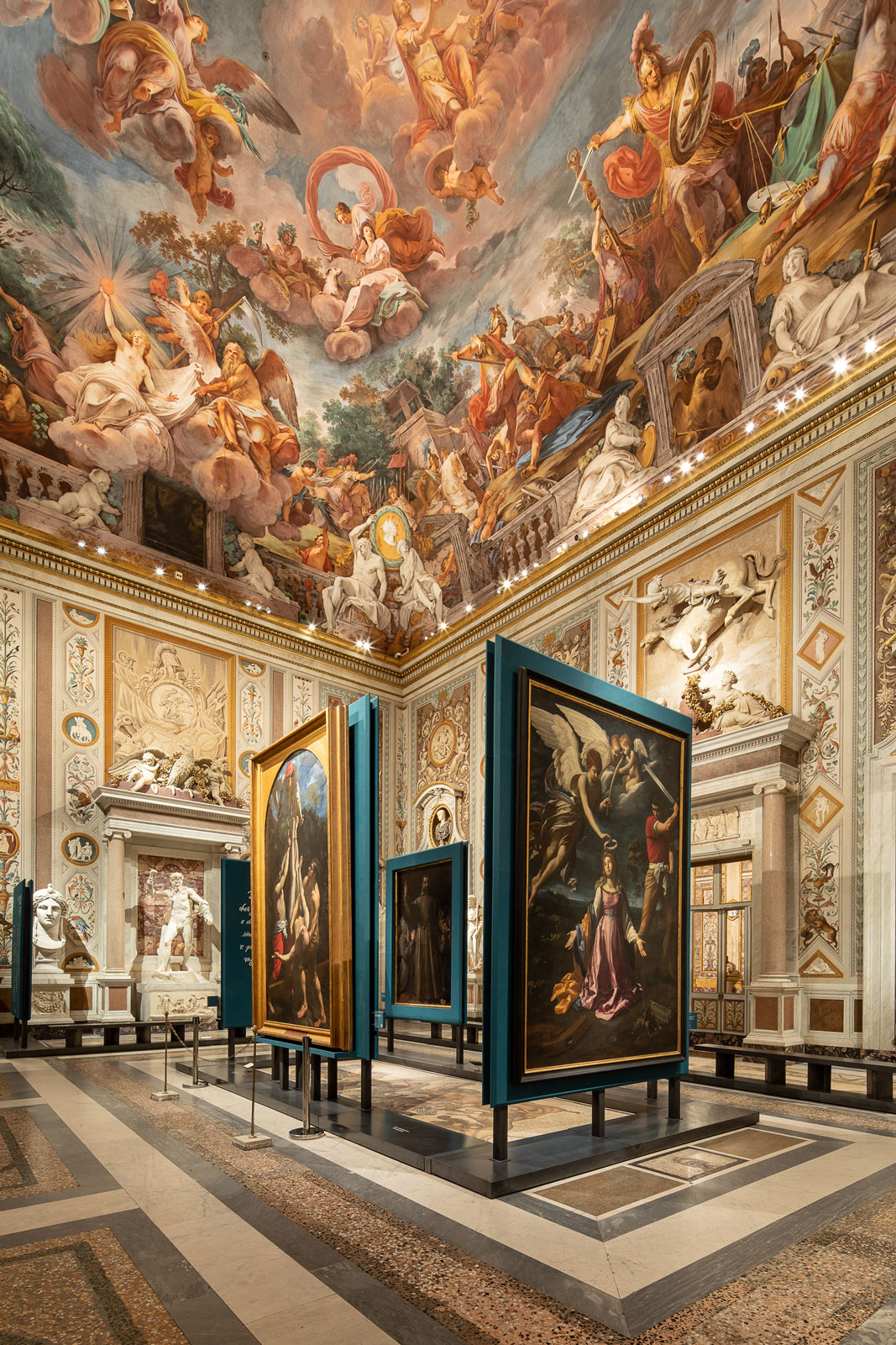Introduction
Guido Reni

In 2020 Guido Reni’s Country Dance was reacquired for the Borghese Gallery collections after an absence lasting centuries. This important “return to the fold” is at the heart of this exhibition of over thirty paintings, mostly by the Bolognese artist but also by the masters, colleagues, associates and friends, who shared with him the youthful, crucial years of his first stay in Rome: Annibale Carracci, Domenichino, Francesco Albani, Paul Bril. In these years, between 1601 and 1614, he practised landscape painting – hitherto given little attention among his works –, engaged in the passionate study of antiquity and the Renaissance, and acquired a deep, incredibly comprehensive knowledge of Caravaggio’s paintings. He also built lasting relationships with the great patrons of his time, Pietro Aldobrandini, Paolo Emilio Sfondrati, and Scipione Borghese.
In the Lanfranco Loggia, on the floor of the picture gallery, we find the paintings that show us Guido the landscape artist, first and foremost his Dance – a singular scene bringing together peasants and the gentry set in a clearing at the foot of a hill. Here, we can compare it to other examples of the genre, which offer an opportunity to evaluate his approach to landscape subjects in the context of the first great period of landscape painting in Rome.
Guido was magnificently responsive to the great stimuli that, in those years, the city offered and imposed. We must therefore remember, especially in a museum with such a strong focus on the genre, his attraction to ancient sculpture, seen not only in precise quotations but also in terms of spatial presence, gestural consistency, and facial expressiveness, such as in the Massacre of the Innocents, Paul Rebukes the Repentant Peter, or Atalanta and Ippomenes in the sculpture rooms of the museum.
On the same floor, in the entrance hall, we see lastly his altarpiece, a genre of religious art which in that period met with renewed interest and which in this case sees a compositional arrangement based on solemnity and imposing size. Guido responded to this trend with giant, powerful figures, the protagonists of martyrdoms and assumptions, capable of touching souls. Although apparently anomalous in such a profane space, they are, with their clear, communicative nature, in fact welcomed by this setting of such versatility: as Scipio conceived it, a private space for grandiose desires.